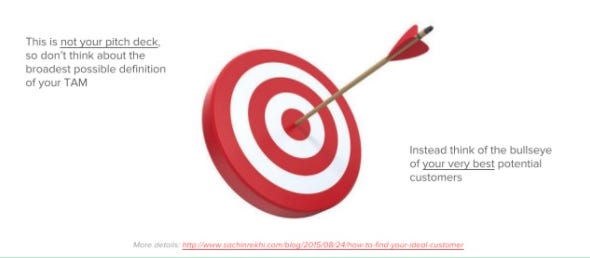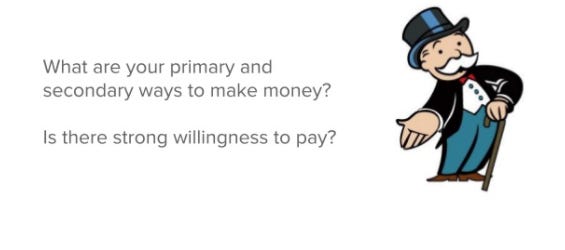How to formulate a compelling vision & strategy for your product
Everything you need to know to become a great product manager
Every product starts with a vision - The Why behind the product and the strategy - The How the vision will become a reality.
A product strategy and vision is the pillar of your product. If they’re vague, unreliable, and thoughtless, your product and your team will suffer from a lack of direction. Consequently, having a product strategy and vision that no one adheres to will give you an aimless, messy roadmap.
This article will go deeper into these two subjects - vision (the why) and strategy (the how) and how they play a role in product lifecycle management.
Let’s jump in👍
Product Vision
Product vision clarifies why you are bringing a product to market in the first place and describes the future we are trying to create. The vision is the raison d’être of the entire effort and forms the basis of the strategy and roadmap.
Marty Cagan defines 10 key principles behind formulating a vision statement -
Start with Why
Fall in love with the problem and not with the solution
Think big
Don’t afraid to disrupt yourselves.
The product vision needs to inspire.
Determine and embrace relevant and meaningful trends.
Skate to where the puck is heading, and not where it was.
Be stubborn on vision but flexible on details.
Realize any product vision is a leap of faith.
Evangelize continuously and relentlessly.
Let’s take a look at some of the product vision statements from the leading brands -
JetBlue: To inspire humanity – both in the air and on the ground.
Linkedin: Create economic opportunity for every member of the global workforce.
Nike: To bring inspiration and innovation to every athlete* in the world. *If you have a body, you are an athlete.
Ideally, when formulating a vision statement, we need to be mindful of the following -
If you are wondering how to create a product vision statement, here is Geoffry Moore’s product vision template that you can follow -
Product Strategy
In his The Lean Startup book, Eric Ries defines the product strategy as a bridge between the vision and the product. While the Product Vision explains the “why,” Product Strategy defines the “how” the vision will be achieved. Product Strategy is the formula to turn the vision into reality. It’s the blueprint of a product’s success (or failure).
In terms of product teams, product strategy helps us decide what problems to solve; product discovery helps us figure out the tactics that can actually solve the problems; and product delivery builds that solution so we can bring it to market.
- Marty Cagan
Product Strategy is important, yet it is not unusual to see that many organizations do not even have a product strategy. The reason is product strategy is hard. According to Marty Cagan -
So why is product strategy so hard? Because it requires four things that are not easy for most companies:
The first is to be willing to make tough choices on what’s really important;
The second involves generating, identifying and leveraging insights;
The third involves converting insights into action;
And the fourth involves active management without resorting to micro-management.
While there are many ways to talk about Product Strategy, I personally find Sachin Rekhi’s Product-Market-fit hypothesis framework very useful in defining a product strategy (at least for products that haven’t reached Product-market-fit yet). The framework talks about the key essential dimensions that you must define for your product success. These dimensions of the hypothesis define how your vision will come into reality. Let’s jump in to see what they are 👍 -
Target audience
You need to decide who is your ideal customer. While deciding it, you need to make sure that the target audience should not be the broadest possible definition of the total addressable market. Instead, it should be your very best potential customers.
Problems that you are solving
You need to decide the type of problem that you plan to solve. Is it a vitamin or painkiller? The vitamins are like something good to have; a customer will do perfectly fine even in the absence of these products. Think Facebook or any other social media product, for example.
Whereas the painkillers address the real pain of a customer. For example, Google Map solves the customer's pain of discovering the route towards an unknown destination.
Value proposition
The value proposition is the promise that you make to your customers about your products' value. This need not be the feature lists, but the core value of your products.
Strategic Differentiation
Unless this is a monopolistic market or you have found a perfect blue ocean for your product, you will be surrounded by various competition - both direct and indirect. Your product strategy should cover why your solution is 10x better than the leading alternatives.
Competition
As a continuation of the above point, your product strategy should define how it will win over the direct and indirect competition.
Acquisition Strategy
Building a product is useless unless you have the customers using it. Your product strategy should define your customer acquisition strategy - how will you find and attract your potential customers? And most importantly, how will you do so cost-effectively?
Monetization Strategy
Making money is the ultimate goal for any start-up. Thus, your product strategy should talk about your monetization strategy, as well. It’s about defining the primary and secondary sources of making money.
KPIs
Finally, it’s about defining the right metrics to measure and track the progress, whether you are moving in the right direction.
Defining product strategy is all about deciding on the tactics for all these dimensions mentioned above. A differentiated strategy is all about innovating one or two dimensions and following the rest's best practices. There is really no need to innovate on all possible dimensions.
For example - When Google Maps was launched, it was not the first entrant (Mapquest was the first maps service ever launched). Google just innovated, creating a superior experience for the users as differentiation and made them 10x better than the competition.
Product Strategy is not static.
Every great entrepreneur will say that the key to success is to remain firm on the vision while being flexible on the strategy. Thus, product strategy is never a one-time activity. The key to formulating a successful strategy is to evaluate the performance periodically and then to decide whether to pivot or persevere based on what’s working and what’s not.
Pivot/Persevere
Even though changing strategy overnight is not something straightforward to do or recommended, there is always a possibility to decide whether you want to pivot or persevere on a particular strategy, especially when the data says - things are not ok. Pivot is basically to change and adapt to a new strategy, while persevering is to stick to an existing one.
The key to success for a startup depends on its efficiency to decide whether to pivot and persevere and how quickly they can pivot if there is a need.
Eric Ries defines multiple pivot techniques as follows-
Zoom-in pivot. In this case, a feature that was previously considered as a single feature becomes the whole product.
Zoom-out pivot. In the reverse situation, sometimes, a single feature is insufficient to support all customer needs. This type of pivot, which was considered the whole product earlier, becomes a feature - a part of a larger product.
Customer segment pivot. Your product may solve some real problems for a customer base that is not originally defined as a target segment. In this type of pivot, the target customer is positioned for a more appreciative segment and optimized for that segment.
Customer need pivot. Early customer feedback may indicate that the problem solved is not very important, or there is no addressable market. This requires repositioning, or a completely new product, to find a problem worth solving.
Platform pivot. This refers to a change from a product to a platform or vice versa.
Business architecture pivot. Geoffrey Moore has two major business architectures: high margin, low volume (complex systems model), or low margin, high volume (volume operations model). You can’t do both at the same time. This pivot is all about switching from one to another.
Value capture pivot. This refers to the monetization or revenue model, or the way value is captured. Changes to how a startup captures value can have significant consequences for business, product, and marketing strategies.
The engine of growth pivot. Most startups typically use one of three primary growth engines: the viral, sticky, and paid growth models. Pivoting to the right model can dramatically affect the speed and profitability of growth.
Channel pivot. Channels are the mechanism by which a company delivers its product to customers. Channel pivots usually require rethinking pricing, feature, and competitive positioning adjustments.
Technology pivot. Sometimes a startup discovers changing the technology can significantly impact profitability, user experience, or performance.
To wrap this up, Product vision is the reason behind a product’s existence. A product vision should be inspiring, bold, and ambitious.
Product Strategy defines the how behind a vision and is often considered a tough thing to do (In many companies, there is no product strategy).
Product strategy addresses the pointers essential for a startup to be successful. It’s the tactics that a business employs to make its vision a reality.
Sachin Rekhi’s Product-Market-fit hypothesis is a good framework to follow while defining product startegy.
Lastly, the product strategy is not a one-time activity. It’s all about iterating and measuring till the product-market-fit is achieved.
Thanks,
Arkapravo
To receive more such articles in your email, consider subscribing. 👇
Click here to learn more about the Product Hub Newsletter.
Reference -















